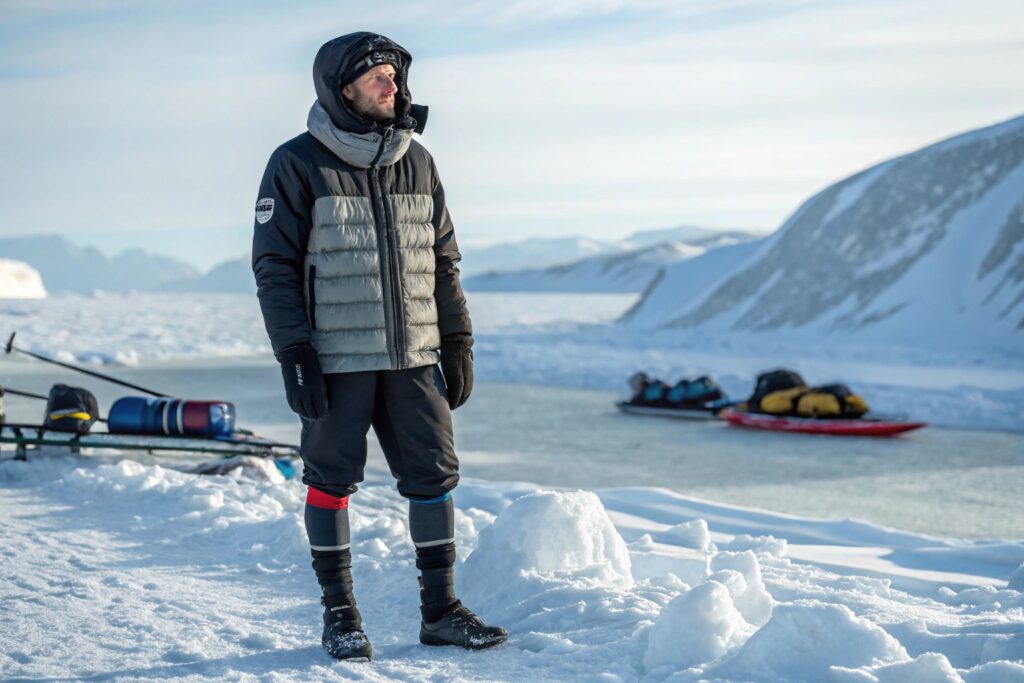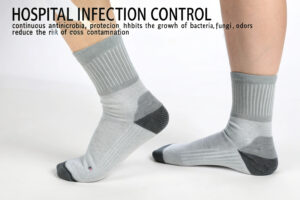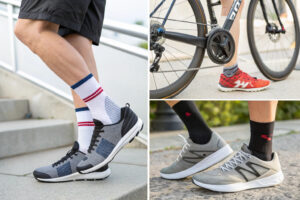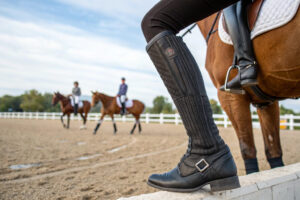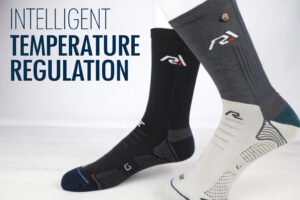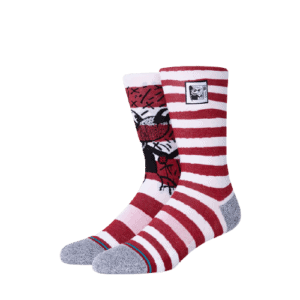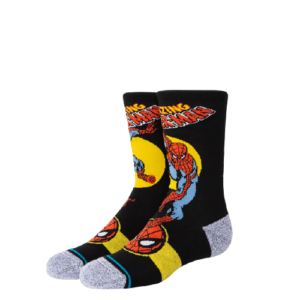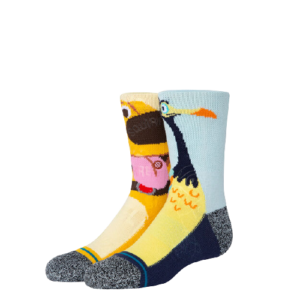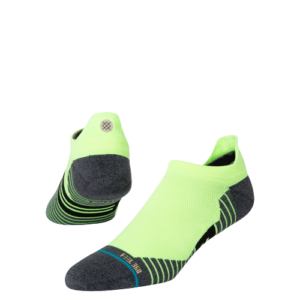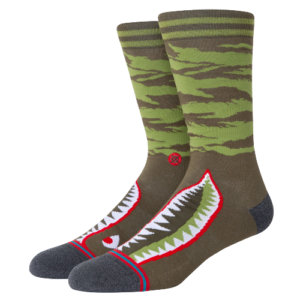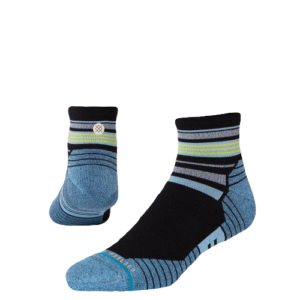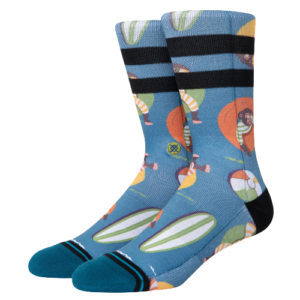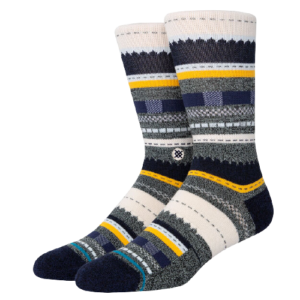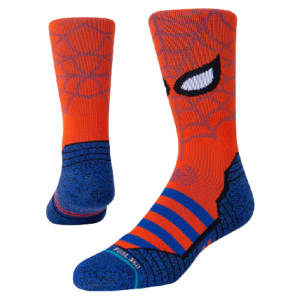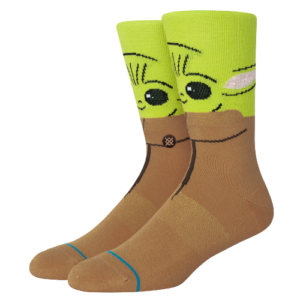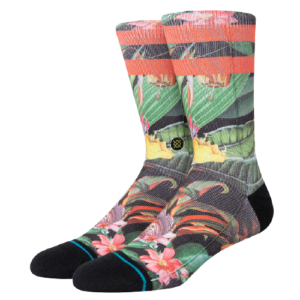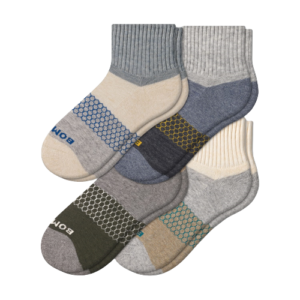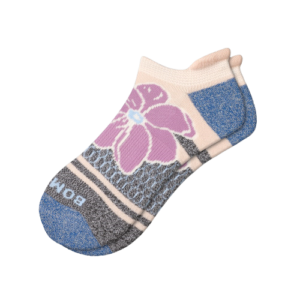When temperatures drop below freezing, ordinary socks won’t cut it. For winter sports enthusiasts and Arctic expeditioners alike, foot protection isn’t just about warmth—it’s about performance, endurance, and safety. Buyers like Ron, who serve outdoor brands and tactical markets, know that quality thermal socks can be the difference between a good day and a frozen disaster.
Thermal socks are effective in extreme cold because of their advanced insulation, moisture-wicking capabilities, structural support, and durable materials built for subzero performance.
At GlobalSock, we’ve engineered thermal socks used by ski brands, snow patrols, and even polar teams. Here’s what we’ve learned makes them truly winter-proof.
How Do Thermal Socks Retain Body Heat in Subzero Temperatures?
Thermal socks keep feet warm by trapping and recycling body heat, not by generating heat themselves.
They are designed with high-loft yarns and layered construction that create micro-air pockets, which act as insulators against the external cold.
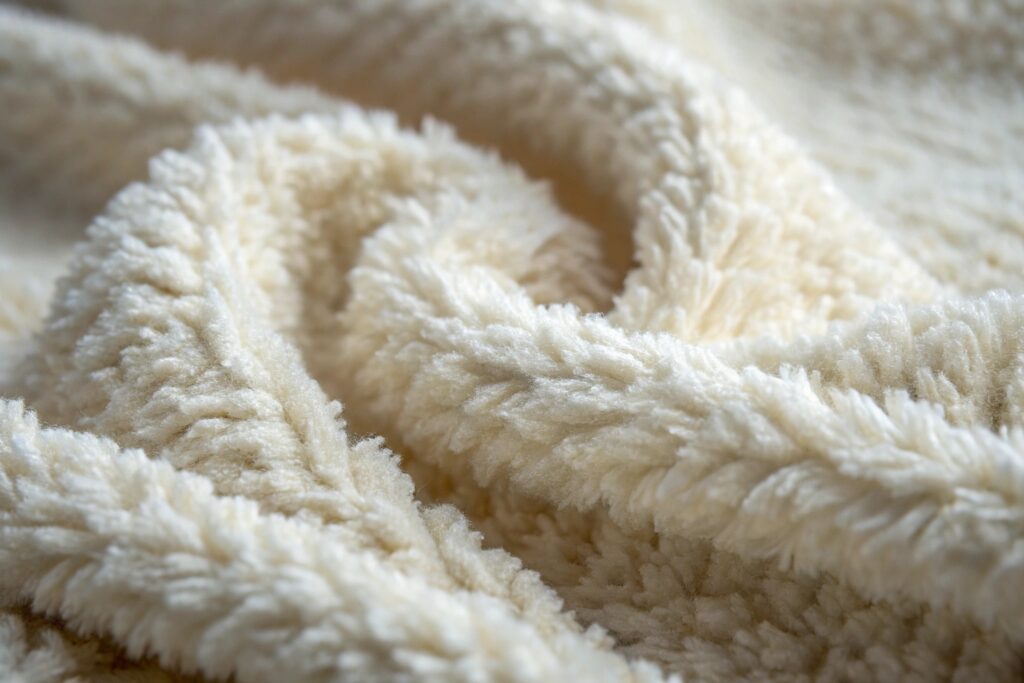
What Materials Are Best for Thermal Insulation?
Top insulating materials include:
- Merino wool: Natural, breathable, and thermoregulating
- Acrylic blends: Lightweight with high heat retention
- Thermolite® or Primaloft® fibers: Engineered synthetics for cold climates
We use Südwolle Merino yarns blended with Thermolite® from Invista to achieve optimal warmth-to-weight ratios.
How Do Design Layers Enhance Warmth?
Our 3-layer thermal socks use:
- A brushed inner layer for soft insulation
- A central cushioning core that traps warm air
- A smooth, wind-resistant outer shell
We test cold endurance using EN 511 standards for protection against convective and contact cold—common in winter sports and Arctic activities.
Why Is Moisture Control Critical in Cold Environments?
In freezing temperatures, wet feet are dangerous. Moisture conducts heat away from the body 25x faster than air, dramatically increasing the risk of frostbite.
Effective thermal socks wick sweat away from the foot and release it through breathable outer layers, keeping skin dry even during high-intensity movement.
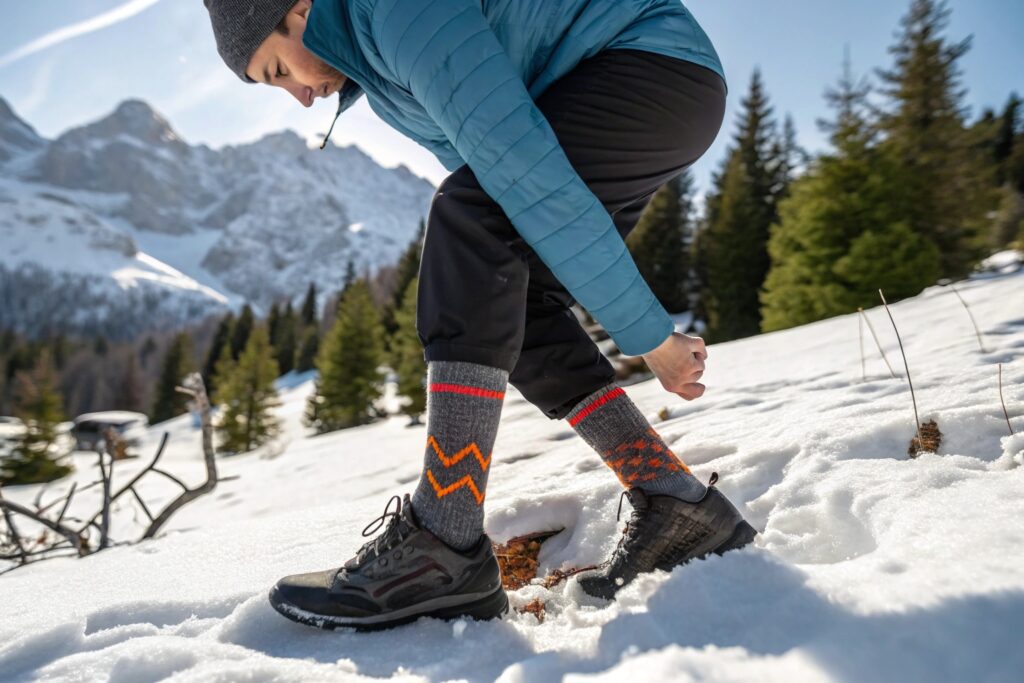
How Does Fabric Choice Affect Moisture Management?
Merino wool naturally wicks moisture and can hold up to 30% of its weight in water before feeling wet. Paired with synthetic fibers like nylon or Coolmax®, it accelerates sweat transport.
We source moisture-regulating yarns from Nilit® and conduct moisture vapor transmission tests at SGS Labs.
Are Ventilation Zones Needed in Cold Socks?
Yes—especially in the instep and arch areas. We integrate mesh ventilation channels into the mid-foot zones. These release heat from sweat-heavy regions while keeping insulation intact elsewhere.
Our socks rate above 6000 g/m²/24hr in MVTR testing—a key measure of breathability used by cold-weather apparel brands.
What Structural Features Improve Fit and Reduce Cold-Related Injuries?
Cold-weather conditions often come with reduced dexterity and slower circulation. Poorly fitting socks can lead to blisters, numbness, or even frostbite.
Thermal socks include ergonomic features like zoned compression, seamless toes, and reinforced impact zones to maintain circulation, prevent rubbing, and lock in heat.
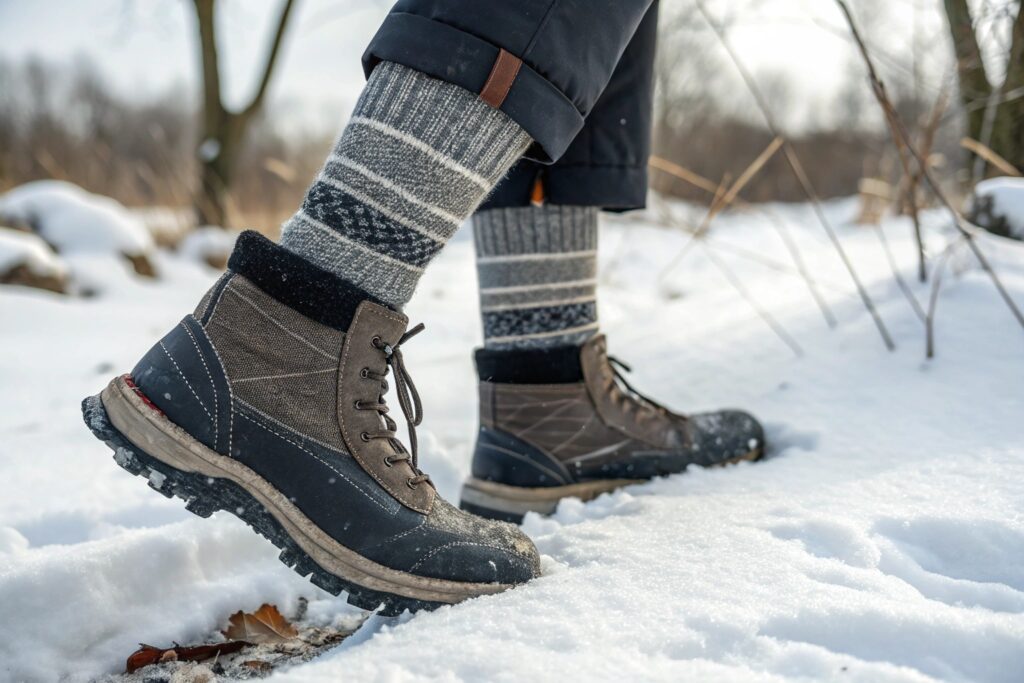
How Does Compression Improve Circulation in the Cold?
Graduated compression helps keep blood flowing to the extremities—crucial when peripheral blood vessels constrict in subzero temperatures.
We follow ISO 13485 standards for medical compression zones and work with Medi® grade testing tools to ensure safe, sustained pressure below the calf.
Do Reinforced Zones Make a Difference in Cold Sports?
Yes. Impact zones—like the heel, toe, and ball of foot—wear down fast in snowboarding, skiing, or snowshoeing. Reinforced terry padding not only adds durability but creates extra heat-trapping loft.
Our toe/heel abrasion resistance scores exceed 20,000 cycles under Martindale testing—meaning socks last longer without losing function.
How Can Manufacturing Support Long-Term Arctic Use?
Arctic conditions push socks to the limit—so do consumers expecting multi-season durability. From yarn prep to shipment, thermal socks must be built with longevity and function in mind.
We ensure Arctic-readiness through certified testing, double-brushed finishes, quality control tracking, and cold-chain packaging for guaranteed thermal integrity.
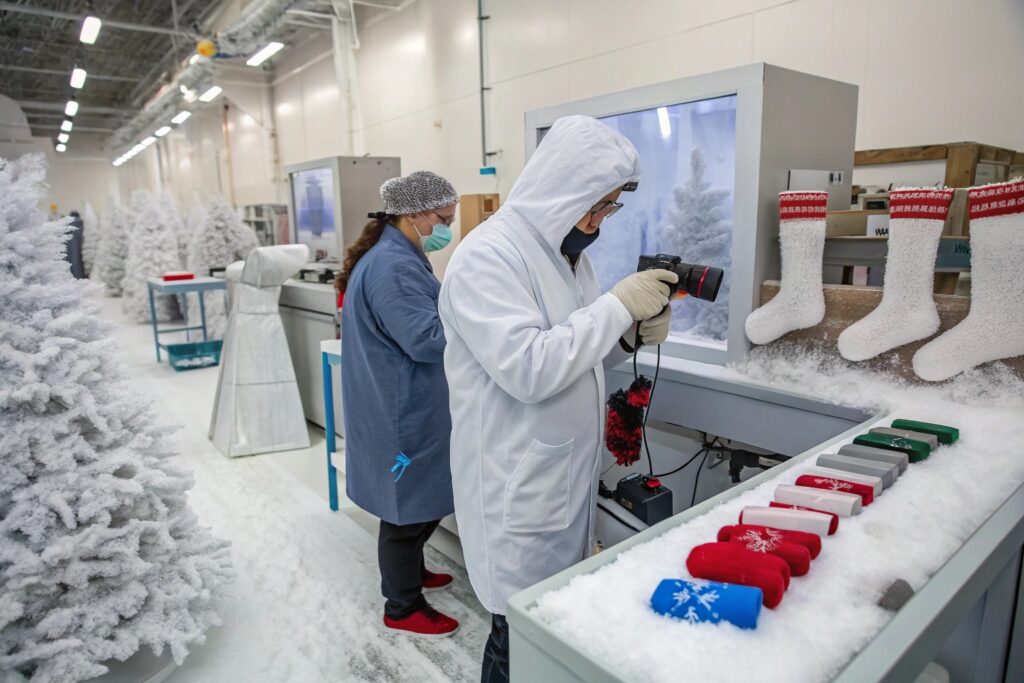
What Cold Resistance Tests Do We Use?
Our in-house lab in Keqiao uses:
- Thermal resistance (Rct) testing via ISO 11092
- Flex fatigue testing for up to -30°C operation
- Water vapor resistance via sweating guarded hotplate method
We partner with Textile Protection And Comfort Center (T-PACC) to run wear trials under simulated Arctic field conditions.
What Kind of Packaging Keeps Socks Winter-Ready?
Vacuum-sealed or foil-wrapped packaging reduces moisture ingress during shipment. QR-coded hangtags link to usage guides, and cartons use humidity-controlled liners from US-based Packrite®.
This attention to detail has helped us maintain less than 1.2% complaint rate across winter gear OEM orders in 18 countries.
Conclusion
Thermal socks are more than thick layers of wool—they are technical garments built for performance, safety, and endurance. Whether for Olympic ski teams or Arctic research crews, our designs combine insulation, fit, breathability, and certified testing to deliver unmatched winter readiness. If you're sourcing socks for cold-weather performance, we’ve already solved the frostbite equation—one stitch at a time.

